Newly passed legislation may lower the threshold for acceptable lead levels in water fountains in New York public schools. Hundreds of fountains in city parks have tested above that new number.

Adi Talwar
A drinking fountain at Mount Hope Playground in the Bronx.The water from hundreds of drinking fountains in New York City parks contains lead, data from the Parks Department shows—and while the levels are within the range deemed safe by federal standards, advocates say the threshold is outdated and should be lowered, an effort that’s already underway in public schools.
Nearly 3,500 public water fountains were tested in 2019 as part of Mayor Bill de Blasio’s LeadFreeNYC initiative, which the city pledged would “help eliminate childhood lead exposure in New York City,” and “ensure no stone is left unturned.” The fountains that were found to have lead levels above an Environmental Protection Agency-mandated “action level” were put out of service, fixed and retested.
But more than 320 additional fountains had levels of lead lower than the federal action level but higher than what is allowed in bottled water and, due to a newly passed bill, what state lawmakers want as the new safety threshold in New York public schools.
In determining which fountains required repairs after the 2019 testing, the Parks Department used a baseline from the EPA’s Lead and Copper rule guidelines, which calls for intervention when lead levels exceed 15 parts per billion (ppb).
Experts, however, say that level is still too high and presents a danger to children drinking the water.
“The bottom line is, there is no safe level of lead in drinking water,” said Joan Leary Matthews, head of the Urban Water Management team of the Natural Resources Defense Council, a left-leaning environmental nonprofit. “The city should really do better.”
Advocates have been calling for the state to reduce the allowed levels of lead in public schools’ drinking water from 15 to 5 ppb. About 9 percent of drinking fountains in city schools have lead levels within that range, according to a February report published by the New York League of Conservation Voters, with the NRDC providing technical input.
In June, the State Legislature passed a bill that would require New York schools to test the drinking water every three years — more frequently than the previous five-year cycle — and that levels be no higher than 5 ppb. Gov. Andrew Cuomo has not yet signed the legislation into law.
Doing so may provide the impetus for the city’s Parks Department to implement changes, said Matthews. “Why have different standards?” she added.
Matthews and her team support the 5 ppb threshold, which is the maximum amount of lead that the U.S. Food and Drug Administration allows in bottled water. It is also the baseline used in Canada and the European Union.
Lead exposure, even in small amounts, can lead to cognitive impairment and neurobehavioral issues in children, according to the American Academy of Pediatrics.
In January, the Trump administration made changes to certain portions of the EPA’s Lead and Copper Rule, which dates back to 1991. The changes call for additional transparency by utility companies when lead is found in water and require schools and childcare facilities to test for lead. But the new rule kept the 15 ppb baseline and gave utility companies more time to replace problematic pipes.
A week later, shortly after taking office, President Joe Biden issued an executive order halting the implementation of the new rule, which was set to go into effect in March, so that the EPA could take additional time to review and consider revisions, including potentially changing the baseline action level.
The EPA is currently reviewing the Lead and Copper Rule and is taking public input on it through the end of this month.
A City Limits analysis of the city’s 2019 testing of city parks drinking fountains found geographic disparities, with a disproportionate number of fountains in the 5-15 ppb range concentrated in certain parts of the city.
A majority of the fountains that tested within those levels are in Staten Island, with 15 percent of the borough’s fountains in that range, and the Bronx, where 11.6 percent of fountains fall in that range. In Manhattan, more than half of the 50-plus fountains with those lead levels were in Harlem, Washington Heights and Inwood.

Liz Donovan/Google Maps
A map of water fountains that tested for lead levels between 5 and 15 ppb. Environmental advocates have called for the city to ensure levels don’t exceed 5 ppbs.The Parks Department plans to retest 20 percent of the park fountains this fall, but did not specify how those fountains will be selected or which will be retested. A spokesperson also noted that the Department of Environmental Protection conducts more than 600,000 tests of the city’s water each year to ensure it meets or exceeds all state and federal health standards.
“New York City’s water is safe, and Parks drinking fountains also do not represent a significant source of drinking water for most people,” said the spokesperson.
Matthews agrees that the parks’ water might not be as much of a water source as tap water in homes or in schools, where children spend most of their day. But she said that’s no excuse to allow for potentially unsafe levels.
“[The Parks Department] is on the right track,” said Matthews. “They just need to get lower.
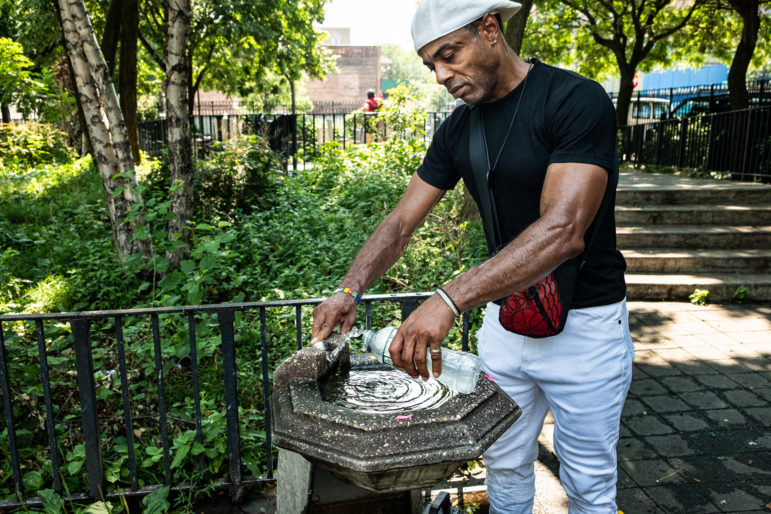
Adi Talwar
Eugene Parker, 52, filled a water bottle in the Mount Hope Playground during the heatwave earlier this month. He said he normally would not drink the water in his neighborhood parks, comparing the fountains there to those in Union Square and Bryant Park, where he used to rehydrate while working as a bike messenger in Manhattan. “The fountains down there are high quality, good water,” he said.Liz Donovan is a Report for America corps member.


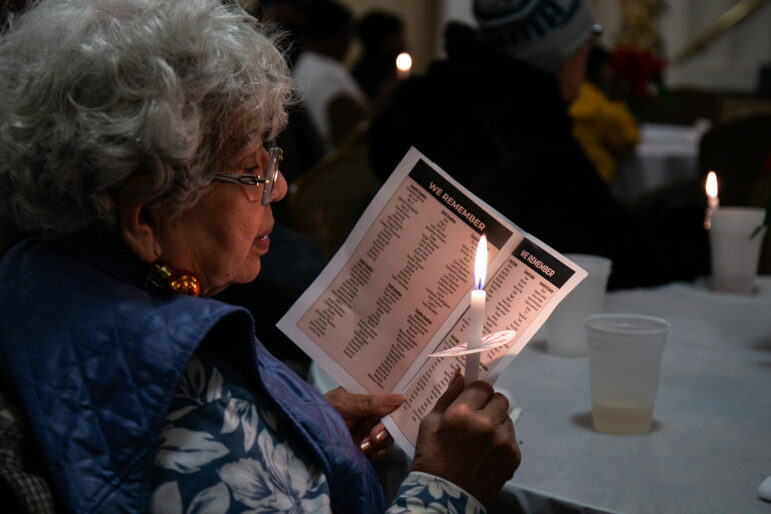
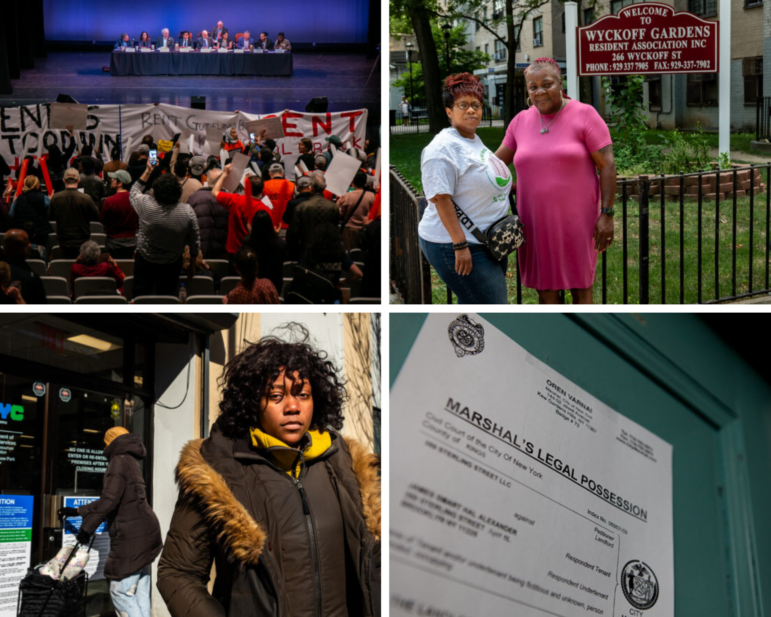
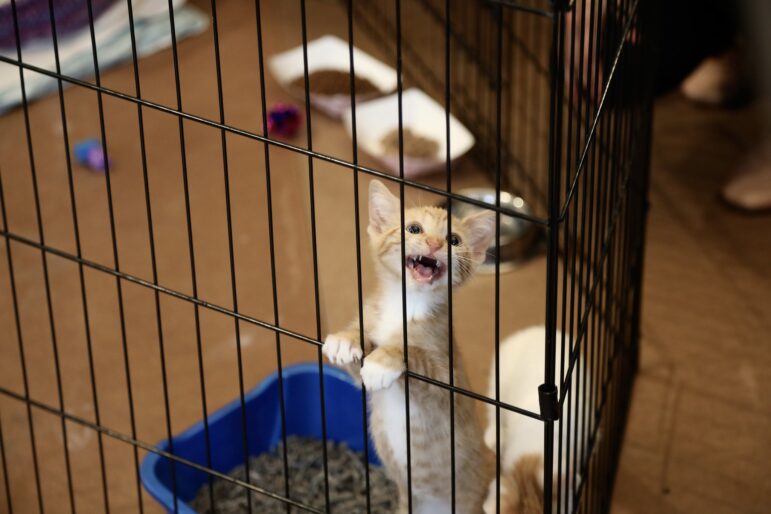

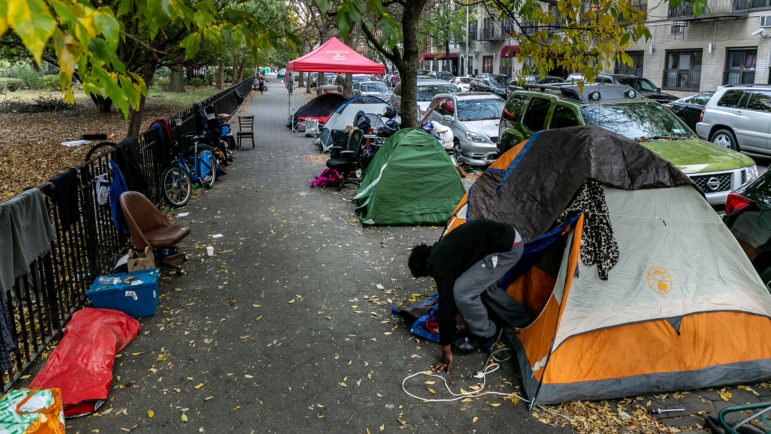


One thought on “NY Lawmakers Seek Stricter Lead Safety Standards for School Water Fountains. What About Parks?”
We can get all drinking fountains in NY schools to no detection and keep them there. Schools should be required to test annually not once every 3 years!!!